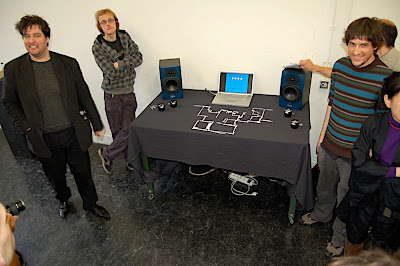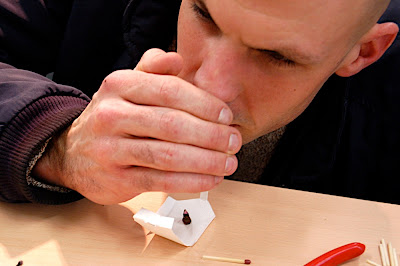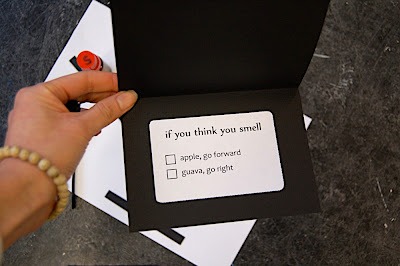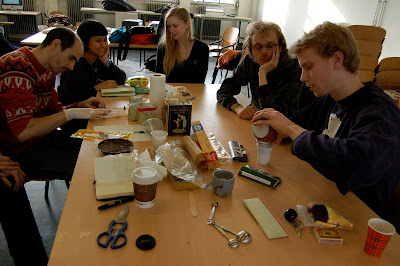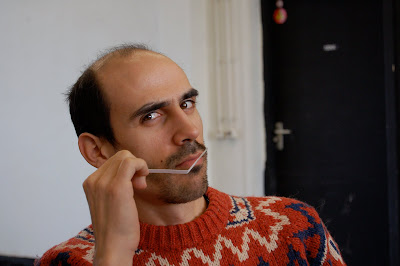...continues from Final presentation (1)
Mini-project final presentation
theme: olfactory game
18.02.2010.
18.02.2010.
Juan & Pablo
Smell and listen, then guess where you are! There are 4 smells and accompanying sounds collected from different departments of the Art Academy:
- Photography
- Fine Art
- Wood Workshop
- Lithography
"How difficult! My brain is totally confused!"
Willem
A small do-it-yourself kit with a couple of smells to be enjoyed in steps.

